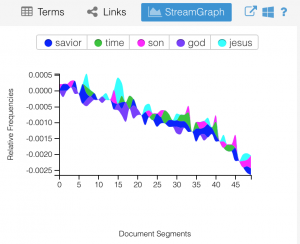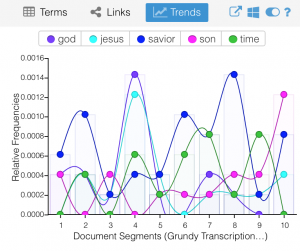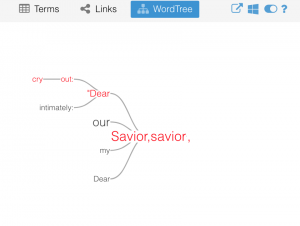For my transcription project, my group and I transcribed the works of Samuel Tippett. Tippett reflects on his life and his coming of age. He starts by speaking of his life as a young boy. As Tippett describes it, “I have been such a bad Boy”. (2) Instead of becoming an apprentice like his mother so desperately wanted, he worked in the coal pits where he was able to continue his childish and deceitful behavior. Once he realized his life decisions and trajectory were not something he was proud of, he made a serious effort to change his life. He wanted nothing more than to become a responsible and religious family man, but unfortunately, as he began this journey he was constantly reverting back to his old habits. Later in his life, Tippett decided to marry, and with this wife he had eleven kids. (It is interesting that this is the only time he mentions his wife or kids in the entire text.) Tippett found that even having a family was not enough to make him change into the man that he so desperately wanted to become. Eventually he decided to attend an event where a man, Mr. Whitfield, spoke and this changed Tippett’s life. Mr. Whitfield explained that Jesus does forgive and even people who have been involved in mischief can be accepted by the Lord. Hearing this made Tippett realize that he too could eventually be seen in a positive light by his Savior. After this, Tippett made it his life goal to gain the acceptance of Jesus. He became part of group, which consisted of people, much like himself, that met regularly to learn about Jesus and how to turn their lives around. He began praying ten to twenty times a day and writing too people that he looked up to. He wrote to these people with his problems and questions on how he could better himself. Their willingness to respond really meant a lot to Tippett. Eventually when his group, that would meet almost daily, began to lose members he took it upon himself to rebuild. He moved these meetings to his house in hopes of continuing the tradition. Finally, in 1754, he meets a disciple who had travelled to Bristoll. Tippett saw this a sign from Jesus. Jesus had brought this man into Tippett’s life and he instantly felt a connection. For the rest life Tippett saw this man as his best friend. He was able to stay close to the Disciple even when the Disciple’s business was done in Bristoll and he moved back to London. This stability and companionship was exactly what Tippett needed and he used this friendship as a tool to enjoy the later parts of his life.
What was written above is information that can only be gathered by reading the entire text. There is another way of reading that will not give the reader as detailed of an analysis as reading the entire document would, but it can be very helpful. This process of reading is called distant reading. Voyant is website that allows for the input of documents and it will read, analyze, and produce creative visual tools that summarize the text. I used Voyant to analyze and compare the text from Samuel Tippett’s and Esther Latrobe’s memoirs. Voyant produced a list of five key terms between the two texts: Lord, heart, time, dear, times. These are the five terms that appear the most between these two texts. Seeing that the word Lord is used a total of sixty-one times between the two documents was very predictable. In the time that both Tippett and Latrobe lived religion was incredibly important to individuals and often they would write about it. If you use the links tool you can see the words most often used with lord, time, and heart. The interesting thing you see with this visualization technique is that only one word is used with both lord and heart. This word is love. The last thing I noticed while using Voyant was the most frequent terms used in each text. Samuel Tippett who is coming of age in his memoir uses the word heart most often while Esther Latrobe uses the word lord most frequently. This could be because Tippett was experiencing a more personal journey than Esther. These are just some of the few observations I made while using Voyant.



Even without reading the full text, using Voyant would have been enough for someone to briefly answer my groups research question. The question we hoped to answer was how does religion and faith play a role in Samuel Tippett’s transcription? Traditionally to answer a question like this it was seen as mandatory to read the whole text slowly and carefully, but tools like Voyant allow us to do it a bit differently. Voyant allowed us to collect a broad understanding of two individuals religious beliefs before having to read the text. Seeing that “lord” and “heart” were two of the most commonly used words in around sixty pages of text tells the viewer that both individuals took religion very seriously. Whitley speaks of gaining broad knowledge over a plethora of texts can sometimes be better than super in-depth analysis of just one literary piece. My personal opinion is that if we were to add memoirs of other individuals from the same time period we would continue to see the presence of “lord” in their writing, further supporting the idea that religion was a giant part of these people’s lives in the 18th century and viewers would be able to see that immediately.
Clayton Wright is an economics major at Bucknell University. He transferred to Bucknell from Bowdoin College in 2017. Before college, he grew up in Summit NJ and attended The Pingry School.


